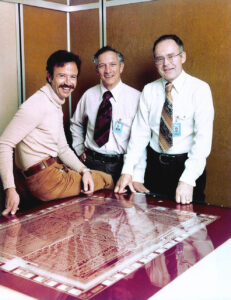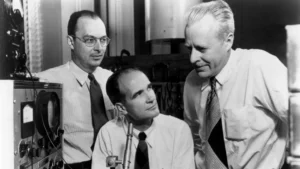Introduction: A Tale of Neglect and Missed Opportunities
Fujio Masuoka, the brilliant inventor behind the revolutionary flash memory technology, remains an unsung hero in his native Japan. Despite his groundbreaking contributions to the semiconductor industry, Masuoka’s story is one of neglect and missed opportunities. His employer, Toshiba, failed to recognize the true value of his invention, allowing archrival Intel to take control of the flash memory market, resulting in a loss of billions for Japan and a gain for America.
The Flash Memory Revolution: A Missed Fortune
In the 1990s, Masuoka’s flash memory invention emerged as the most critical semiconductor innovation. The technology found its way into products worth trillions of dollars, from automobiles and computers to mobile phones. However, Masuoka’s employer, Toshiba, awarded him a paltry bonus and let Intel seize the market’s reins. Despite winning recognition from the Institute of Electrical & Electronics Engineers in New York, Masuoka’s genius went largely unacknowledged in Japan.
Also Read: Who invented Transistor, Really??
Masuoka’s Secretive Beginnings: A Flash of Inspiration
Masuoka’s journey to the flash memory invention began in secrecy. While working at Toshiba, he saw one of the biggest challenges facing the semiconductor industry in the 1970s – the need to create a nonvolatile memory that retained information even when the power was turned off. Inspired by a flash of insight, Masuoka started working on a solution during his nights and weekends without seeking permission from Toshiba. He devised a way to store information in big batches instead of single bits, making the retention of data more manageable through simpler and more compact circuit designs.
The Conference in the USA: Intel’s Recognition
In 1984, Masuoka presented his revolutionary flash memory at the annual International Electronics Developers Meeting in San Jose, California. The American semiconductor industry saw the technology as a significant threat, and major companies, including Intel, immediately requested samples. Intel wasted no time in dedicating more than 300 engineers to develop flash memory further. While Toshiba provided only minimal resources to Masuoka, Intel’s extensive investments allowed them to dominate the market and turn flash memory into one of their top revenue-generating products.
The Lawsuit Victory: Recognition from Toshiba
The lack of recognition from Toshiba and their attempts to demote Masuoka took a toll on his relationship with the company. In 1994, after years of frustration, Masuoka left Toshiba and sought refuge as a professor at Tohoku University. The tables turned when Toshiba decided to withdraw from the DRAM business and focus more on flash memory. They now earn significant revenue from memory chips, including licensing fees from other manufacturers, thanks in part to Masuoka’s groundbreaking invention. However, the recognition came too late, and Masuoka’s contributions were further validated when he won a lawsuit against Toshiba over the ownership of the flash memory patents.
The Continuing Struggle: Japan’s Neglect of Basic Research
Masuoka’s tale serves as a cautionary reminder of Japan’s struggle to keep up with the US in the semiconductor race. The country’s focus on applied research over basic research left innovators like Masuoka and Nakamura frustrated and overlooked. Japan’s loss in the flash memory market to Intel highlighted the consequences of neglecting fundamental research in favor of established products.
The Visionary Continues: A New Invention on the Horizon
Undeterred, Masuoka has been working on his most ambitious invention yet: a three-dimensional silicon-based semiconductor. With the potential to increase semiconductor capacity tenfold and delay theoretical limits until 2040, Masuoka’s innovation holds enormous promise. This time, he is taking his intellectual property to the US, seeking venture capital funding to ensure his creativity is rightfully rewarded.
Conclusion: An Ongoing Struggle for Recognition
Fujio Masuoka’s journey embodies the struggles faced by unsung heroes in Japan’s technology landscape. Despite his monumental contributions, the lack of recognition and support from his home country pushed him to explore opportunities elsewhere. As Masuoka sets his sights on another groundbreaking invention, Japan must reflect on its tendency to overlook its brightest minds and ensure it doesn’t repeat the mistakes of the past. The world awaits the next chapter in the life of this unsung hero, whose ingenuity continues to shape the semiconductor industry.



